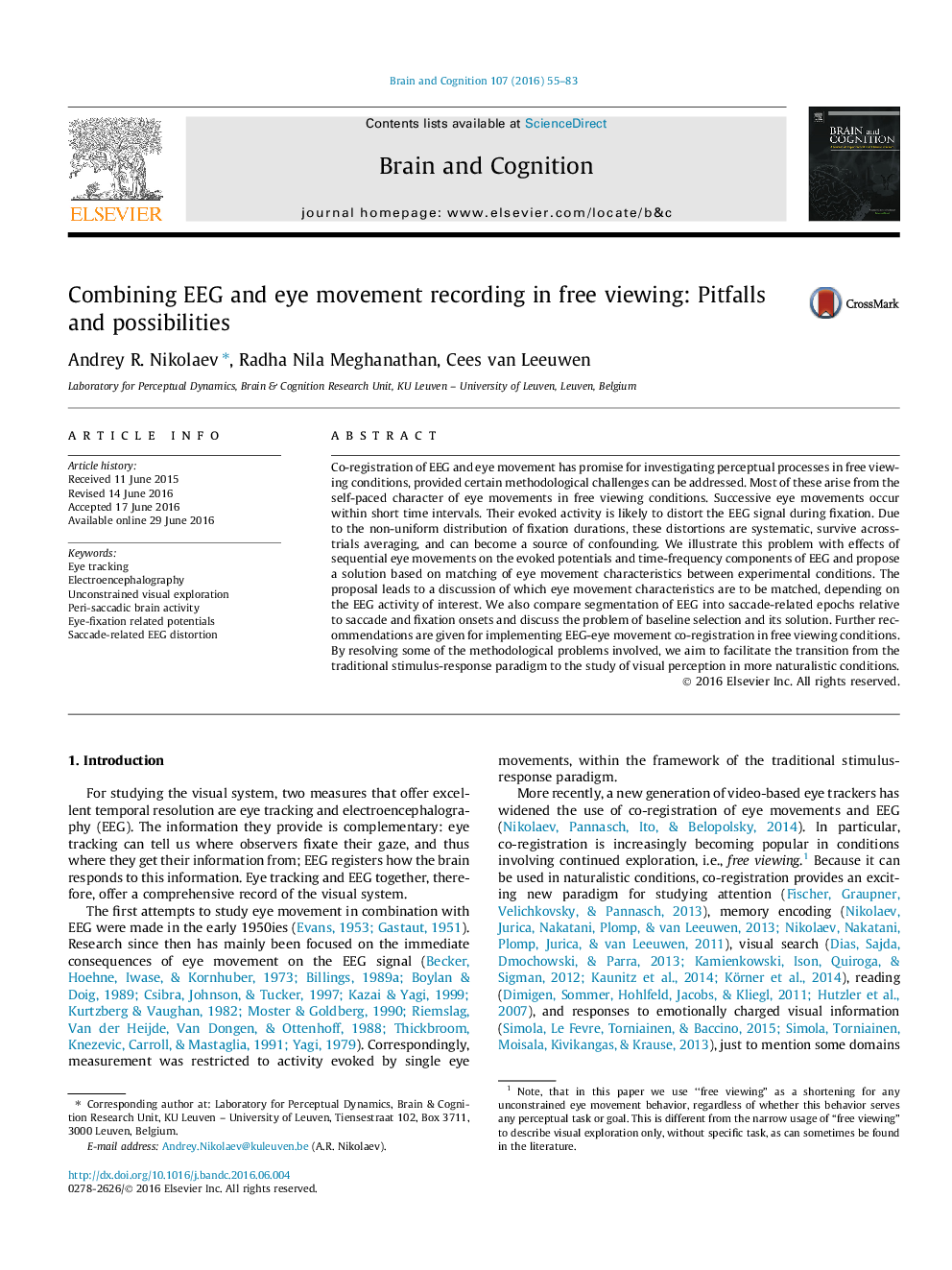| کد مقاله | کد نشریه | سال انتشار | مقاله انگلیسی | نسخه تمام متن |
|---|---|---|---|---|
| 924043 | 1473964 | 2016 | 29 صفحه PDF | دانلود رایگان |
• Co-registration of EEG and eye movement has become a popular tool in cognitive research.
• In free viewing, a serious problem is overlapping saccade-related EEG responses.
• Eye movement effects on EEG could be confounded with experimental conditions.
• Our paper shows various problems associated with saccade-related distortions of EEG.
• Matching eye movements between experimental conditions is a possible solution.
Co-registration of EEG and eye movement has promise for investigating perceptual processes in free viewing conditions, provided certain methodological challenges can be addressed. Most of these arise from the self-paced character of eye movements in free viewing conditions. Successive eye movements occur within short time intervals. Their evoked activity is likely to distort the EEG signal during fixation. Due to the non-uniform distribution of fixation durations, these distortions are systematic, survive across-trials averaging, and can become a source of confounding. We illustrate this problem with effects of sequential eye movements on the evoked potentials and time-frequency components of EEG and propose a solution based on matching of eye movement characteristics between experimental conditions. The proposal leads to a discussion of which eye movement characteristics are to be matched, depending on the EEG activity of interest. We also compare segmentation of EEG into saccade-related epochs relative to saccade and fixation onsets and discuss the problem of baseline selection and its solution. Further recommendations are given for implementing EEG-eye movement co-registration in free viewing conditions. By resolving some of the methodological problems involved, we aim to facilitate the transition from the traditional stimulus-response paradigm to the study of visual perception in more naturalistic conditions.
Journal: Brain and Cognition - Volume 107, August 2016, Pages 55–83
